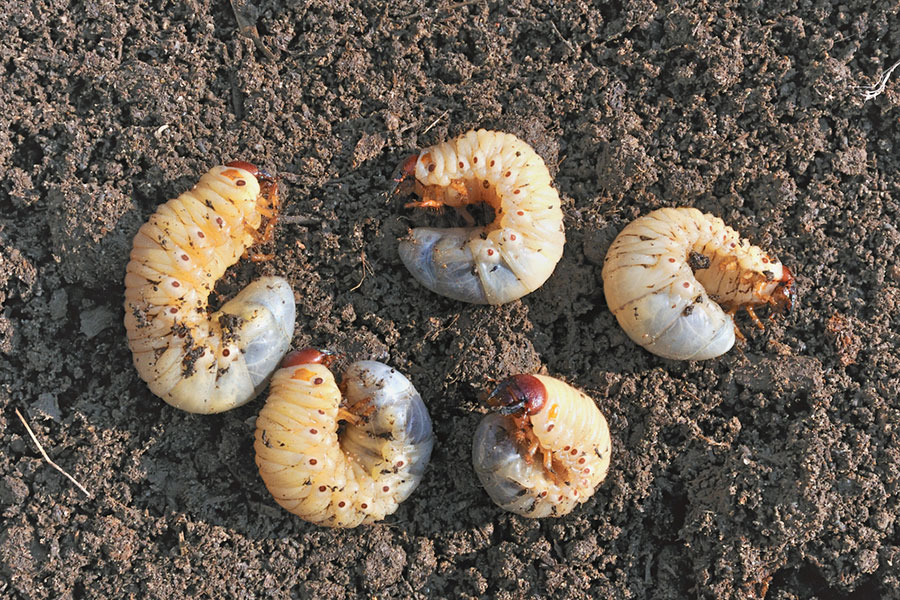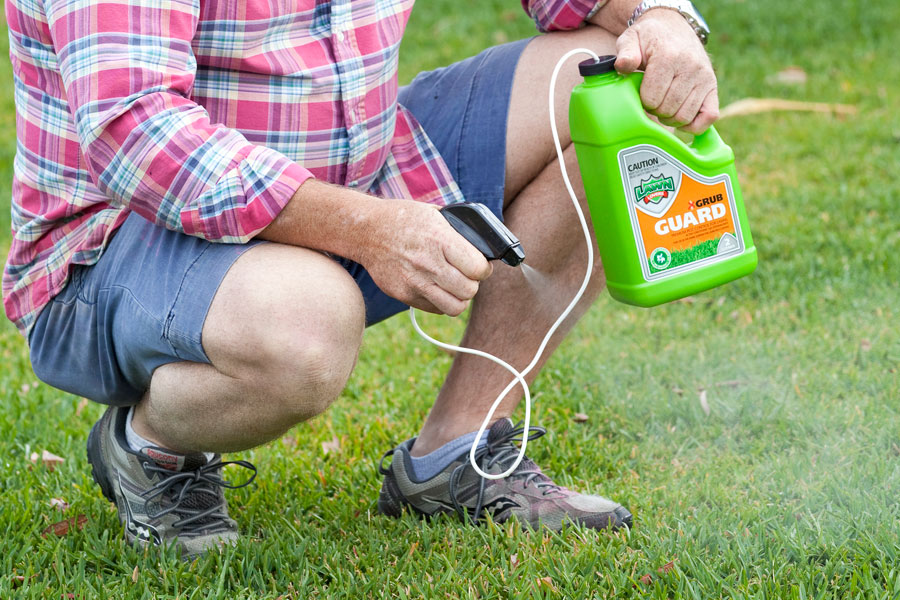How to Identify Lawn Grubs

Traditionally, we see more lawn grub activity during the warmer months of October through to March and the greenest, healthiest lawns are the ones most likely to be attacked. If you have a Couch, Fescue or Kikuyu lawn you do have a greater chance of a grub attack. If you have a buffalo lawn – like Sir Walter – then we normally find that the damage is minimal and the lawn quickly recovers.
Increased bird activity on your lawn
One of the most easily spotted symptoms is an increase in bird activity on your lawn. These grubs make a great snack for the local birds and you’ll find them popping over to your place for lunch!
Greyish-brown moths
Small, greyish brown moths fly around looking out for the healthiest lawn to leave their eggs on, giving their larvae the best chance of survival. These moths can be seen flying around just above the grass normally around dusk. These moths lay their eggs en masse, and in 2–5 days these eggs become grub larvae. These caterpillars are the critters doing the damage as they spend between 18–24 days chewing through your beautiful lawn before becoming pupae and around 5–8 days later moths and so the cycle begins again!
Brown patches in your lawn
As your lawn recovers from the winter chill and spring sees your lawn becoming greener, especially after your spring fertilising, keep an eye out for brown patches that stay brown. You can lift some of the grass in the patches and if lawn grubs are the culprit you’ll find that the grass will roll up like a carpet, as it has no roots.
Spongy lawn
A spongy lawn can also be a good indicator of grub activity.
How to treat lawn grubs
So how do you fix it? If you suspect you have lawn grubs there are treatments available. There are plenty of pest controls available on the market. It’s good to keep in mind that it can take a while to break up the cycle so you want to look for something that is going to remain in the soil, like LSA Grub Guard, available from our online store. With other treatments a second application may be necessary.

